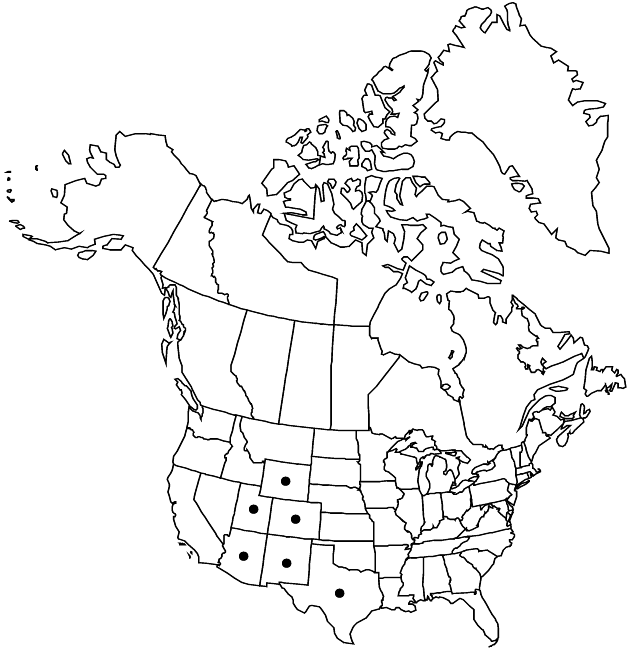Townsendia annua
Contr. Gray Herb. 183: 132, plate 22, fig. 4. 1957.
Annuals, 3–12 (–16+) cm. Stems decumbent to erect; internodes (1–) 3–12 (–18+) mm, strigose. Leaves mostly cauline, blades spatulate to narrowly oblanceolate, 8–12 (–25+) × 1–3 (–5+) mm, not fleshy, faces ± strigillose. Heads at tips of stems. Involucres ± hemispheric, 8–12 (–16) mm diam. Phyllaries 26–30+ in 3+ series, the longer ± lanceovate to oblanceolate, 5–6+ mm (l/w = 2.5–5), apices acute, abaxial faces strigillose to glabrate. Ray-florets 12–30+; corollas white or pinkish to lavender adaxially, laminae 5–8+ mm, glabrous abaxially. Disc-florets 60–120+; corollas 2.5–3.5+ mm. Cypselae 2–3 mm, faces hairy, hair tips glochidiform; pappi persistent; on ray cypselae ± 10 lanceolate scales 0.2–0.5 (–1) mm; on disc cypselae 20+ subulate scales 1–2.5 (–4) mm. 2n = 18.
Phenology: Flowering Apr–Jun(–Oct).
Habitat: Sandy soils, alkaline flats, red clays
Elevation: 1200–2100 m
Distribution

Ariz., Colo., N.Mex., Tex., Utah, Wyo.
Discussion
The type of Townsendia annua may prove to be conspecific with that of T. strigosa.
Selected References
None.
Lower Taxa
"broader" is not a number.